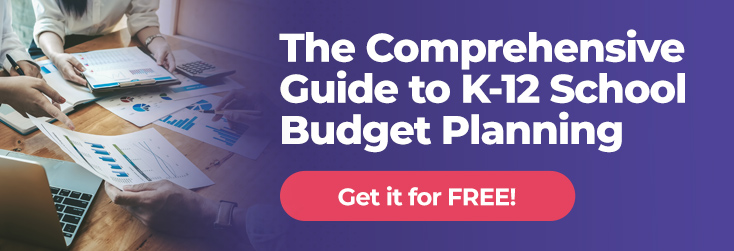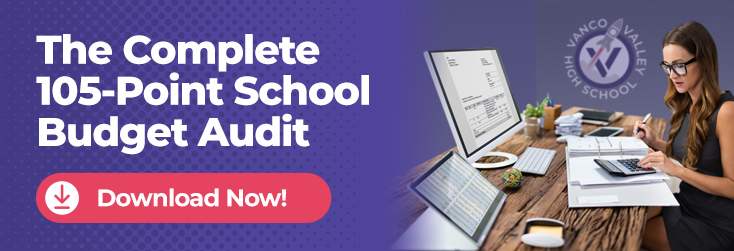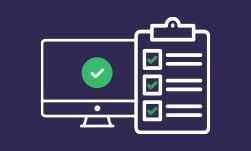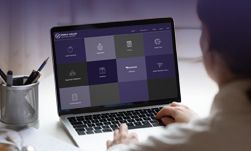 Balancing education budgets in public elementary schools is a challenging task for administrators. Government funding for schools often needs more equity, complicating matters further.
Balancing education budgets in public elementary schools is a challenging task for administrators. Government funding for schools often needs more equity, complicating matters further.
Opting for a stringent budget to survive a financial shortfall doesn't always help. Instead, it exacerbates the situation, leaving students with unmet needs. In the long run, it negatively impacts their performance.
How do you ensure your school has funding to support itself? What education expenditures should you prioritize? Finding creative ways to stretch elementary school budgets can help you determine the best solutions.
In this guide, we'll explore the role of innovative budgeting for public schools. Discover budgeting solutions that can help ensure your students thrive amid financial challenges.
Table of Contents
- Budgeting Challenges in Schools and the Role of Creativity
- What Are Creative Ways to Stretch Your Elementary School Budgets?
- FAQs
Budgeting Challenges in Schools and the Role of Creativity
Good school finance management ensures students have the resources necessary for their success. It starts with creating proper elementary school budgets to prevent funding shortfalls.
Usually, school budgets cover essential elements such as quality teachers and learning materials. They also cater to services like counselors and social workers to address students' social, emotional and mental health needs.
Implications of Low Budgets

Financial challenges can disrupt budgeting, forcing school principals to make difficult decisions. They may need to consider cutting classroom budgets and sacrificing individual attention for students.
These decisions often impact students in underfunded schools, particularly those in poorer states. Recent data from the U.S. Census Bureau reveals that, on average, K-12 spending in public schools is approximately $16,080 per pupilis approximately $16,080 per pupil.
Still, significant disparities exist. Some schools in wealthier areas spend much more, while those in poor communities do with less than $10,000 per pupil. This pupil spending and funding gap burdens educators, who stretch limited resources.
While proper budgeting is vital, principals must find ways to boost school funding. Compromising student welfare is too expensive in the long run. Innovative ideas can help bridge the funding gap and promote equality.
How Innovative Budgeting Is Essential in Schools
Public school budget constraints are a harsh reality, but they shouldn't dictate the quality of education. This is where innovative budgeting in education emerges as a crucial lifeline.
The benefits of innovative elementary school budgeting extend far beyond immediate financial benefits. It also fosters a culture of resourcefulness, collaboration and creativity.
As public school spending breaks free from budgetary limitations, the impact grows very fast. Here are some reasons to explore creative ways to stretch your elementary school budgets.
Optimize Funding Per Pupil
Ensuring schools get enough money is essential for giving every student what they need. The money schools get plays a significant role in making sure education is fair for everyone.
When schools get more money, it makes education better and helps students do better. Students' achievement is higher when schools get extra money, like in areas with money challenges.
We must find new ways to get more money for schools, especially for students who need extra help. This way, schools can start K-12 programs, offer better classes and hire more teachers. Being proactive helps boost funding per student before the need arises.
Mitigate Budget Shortfalls
Budget shortfalls in public education spending, where there's not enough money, are common in many schools. Creative budgeting allows schools to handle these situations more adeptly.
Creativity involves developing inventive ideas to ensure essential aspects of education stay comprehensive. The entire school's operations can continue even when funds are tight.
Creative budgeting encourages schools to think outside the box. This means finding new ways to boost funding, spending it well, and ensuring sustainability.
Tailor Funding to Individual Schools
Every school has distinct characteristics and challenges. But government funding for public schools often follows a one-size-fits-all approach. It often lacks the specificity needed to address each school's unique issues.
Creating a solid educational spending plan for K-12 schools is important. The school budgeting process needs to be straightforward to ensure efficient spending. The budget plan guides them in spending money wisely to meet the different needs of students and the school community.
When we talk about a straightforward budget, it means thinking carefully about what's most important. It's also about ensuring principals balance spending for better learning outcomes.
Because the government's money has limits, schools must actively look for other sources of cash. Doing this helps schools deal with their unique challenges without too much stress.
Boosting education funds gives public schools the freedom to invest in specific solutions. They can improve technology, start special programs or fix buildings. Having extra money lets schools do more than what state education funds allow.
Diversify School Funding Sources
Many principals may struggle to raise adequate school funding. The biggest challenge is often estimating funding per-pupil needs. Many schools have several demographics, making it difficult to estimate accurately.
Exploring alternative school funding sources allows principals to cater to unbudgeted needs. School budgets can become more flexible, allowing principals to tackle emergencies.
Depending on a single funding source is often very limiting. It restricts growth opportunities and denies schools a chance to embrace change. Schools with limited funds may be unable to invest in new technologies.
Address Funding Disparities in School Districts
Lack of adequate funding in district schools is a massive disadvantage for schools in poor states. Funding disparities increase inequality and limit opportunities for students in underfunded districts.
Seeking alternative ways to boost school budgets is an effective way of bridging funding gaps. Adopting new ideas to stretch budgets allows all K-12 schools to cover budget shortfalls.
Schools can provide better opportunities to their students irrespective of background. Students in poor areas can access a better quality of education and improve their performance.
Promote Collaborative Approaches in K-12 Schools
Pursuing creative initiatives is a great way to foster collaboration in K-12 schools. Students, teachers and the local community must share ideas to come up with practical ways to raise funding.
Financial challenges in schools are enormous and often need all stakeholders to come together. With all their other responsibilities, principals may not be able to lead school fundraisers effectively. Creative fundraising brings all parties together, fostering a spirit of teamwork and togetherness. Collaboration enables schools to create a supportive network that benefits the entire community.
Allocate Federal Spending Strategically
Federal spending in elementary and secondary schools focuses on addressing specific education challenges. Its primary goal is to fill gaps, especially when critical needs arise.
Usually, 92 percent of money spent on education comes from non-federal sources. Federal spending covers 8 percent, which is very small. The Department of Education aims to ensure that these funds are used correctly.
With budget shortfalls, using any funds efficiently can take time and effort. Alternative funding creates room for efficient planning and management of school funds.
Schools can strategically direct funds to initiatives that align with targeted needs. This way, they can ensure resources are directed to areas where they can have the most significant impact on student learning.
Empower K-12 Schools in Funding Decisions
Giving K-12 schools the power to decide how they spend money aligns with their educational goals. Schools can focus on their specific needs, creating a student-centered learning environment.
Financial independence means schools can choose how to use their resources. They can create adequate budgets for teacher salaries, materials and technology upgrades. Schools can adapt to changes because they can afford to spend on novel ideas.
Empowering schools in funding decisions improves local decision-making. Local leaders and principals can make informed choices based on their students' needs. This enables decision-making to create more tailored solutions to each school's unique circumstances.
What Are Creative Ways to Stretch Your Elementary School Budgets?
 Creativity enhances success across various aspects of elementary education. Creativity can be a wellspring of cost-saving ideas for school districts in budgeting. Let's explore some creative approaches to augment your school's budget.
Creativity enhances success across various aspects of elementary education. Creativity can be a wellspring of cost-saving ideas for school districts in budgeting. Let's explore some creative approaches to augment your school's budget.
Invest Wisely in Non-Consumables
In elementary school budgeting, getting caught in the consumable trap is easy. Papers, pencils and textbooks can perpetually drain the financial well. But amidst the flurry of these everyday items, non-consumables often take a back seat.
Non-consumables play a critical role in creating a resilient learning environment. They're more durable, reusable and sustainable. Schools focused on investing in equipment, for example, can see the financial sense of their spending for many years.
Non-consumables have the potential to save schools millions in long-term budgets. According to a report by the Center for American Progress, long-term federal infrastructure investment in schools can deliver critical learning benefits to students.
Non-consumables are often the bedrock of any elementary school. From classroom to playground equipment, these investments create a rich learning experience. Usually, schools can only remain sustainable with proper infrastructure investment.
Investing in non-consumables reduces the need for frequent replacements, which can be expensive. Durables like high-quality textbooks can save schools replacement money, which can go on to improve other areas.
Choosing the Right Hardware for Your Schools
Not all durable investments are equal. It's tempting to stretch the classroom budget by opting for cheaper, bulkier options. But, investing in quality over quantity offers long-term benefits.
For elementary school principals budgeting for young learners, focus on the foundational aspects. Focus on durable furniture that can withstand the wear and tear of young learners.
Look for sturdy desks and chairs and mobile storage units. Focus on building flexible classroom arrangements that adapt to different learning styles.
In addition to focusing on quality, consider the impact on learners. Invest in engaging, long-lasting learning tools like manipulatives for math and science models. These spark curiosity, inspire exploration and remain relevant across grade levels.
While technology evolves rapidly, choose versatile equipment with longevity in mind. Opt for interactive whiteboards over projectors. Invest in student-friendly tablets and laptops and choose reliable software with educational value.
Don't neglect the great outdoors when budgeting for classrooms. Look for playground equipment encouraging physical activity, exploration and social interaction. Think climbing structures, swings, sensory gardens and sports equipment for all.
Encourage student and parent involvement in choosing non-consumables. Their input can provide valuable insights into needs and preferences. In turn, it fosters ownership and community responsibility for the learning environment.
Invest in Sustainable Green Energy Solutions
Greening provides schools with an excellent way to save money and boost budgets. In most schools, energy bills are the second largest expense after salaries. The savings can be considerable if K-12 schools invest in green overhauling projects.
Reducing energy bills in K-12 schools is currently a state priority. The government provides recommendations for how K-12 schools can improve energy efficiency. Most of the state-motivated initiatives may need support from local governments.
Investing in sustainability can be gradual, especially where budget shortfalls are an issue. Schools can begin with small projects but with a vast potential to move the needle.
How Sustainable Solutions Can Boost School Budgets
Sustainable initiatives vary and may sometimes strain school and classroom budgets. But the benefits of embracing them in schools can quickly justify the costs.
Reduce Reliance on Traditional Energy Grids
School spending can quickly be reduced after investing in sustainable energy sources. Solar panels and wind turbines provide natural energy sources, which can provide massive savings.
Renewable energy options only need procurement, installation and maintenance costs. The up-front cost can be high, but the system results in energy savings in the long term.
The good thing about investing in sustainable energy initiatives is the easy access to funding. Government and private organizations can provide funding to support these initiatives.
Attract Donations
Greening schools can have a significant impact on classroom budgets, surpassing initial expectations. Beyond this, greening can be a catalyst for attracting funding from various stakeholders.
For example, the local community becomes a crucial ally in supporting green initiatives. If schools involve locals, they can tap into a network of eco-conscious individuals. This engagement can translate into donations, resources or volunteer efforts.
Governments at the local and state levels recognize the role of sustainable practices in schools. Green Ribbon Schools, for instance, exemplify how state-specific programs support greening initiatives.
Private organizations dedicated to environmental causes are often eager to support schools. Schools can seek partnerships with these organizations to secure funding for their projects.
Schools can invest in energy efficiency, waste reduction and green landscaping. Such collaborations can also foster a sense of shared responsibility for environmental stewardship.
Use Classroom Resources Creatively
Resourceful childhood education specialists know that imagination and ingenuity are the ultimate classroom currencies. Creativity can go beyond seeking education funds. It can also focus on maximizing everyday classroom resources.
In particular, schools can stretch classroom budgets by resorting to familiar solutions. Teachers can find that ordinary objects hold immense educational potential by looking around.
Reuse and Recycle to Sustain Classroom Budgets
Reuse and recycle strategies, for example, can reduce school spending. Reusing means avoiding expenditure on new materials, which prevents using education funds.
Encourage a culture of reuse and recycling within the classroom. From cardboard boxes to containers, everyday items can be educational tools.
Teachers can use cardboard boxes for art projects. They can teach math concepts using buttons, coins or even snacks.
Old magazines can also provide fantastic learning tools for students. Teachers can use donated magazines to create a diverse and ever-changing reading corner.
Embrace Digital Platforms for Cost-Effective Teaching
Digital learning is one of the most effective ways to conserve education funds. This approach addresses budget constraints and unlocks a myriad of opportunities.
School Management Costs
Using digital solutions reduces the use of materials like textbooks or printed sheets. E-books and online resources save on printing costs and offer dynamic learning materials.
Embracing online school payments is another excellent way to conserve education funds. Manual tasks like registration or payments can slow down processes and increase costs. Digitizing these processes increases efficiency while boosting cost savings.
Paper use can create significant waste and strain K-12 school budgets. Getting rid of waste is an extra expenditure that further reduces existing funds. Going paperless enables online task management and eliminates paper use.
Classroom budgets will increase when schools invest in digital solutions. Traditionally, taking more students meant investing in more resources. Online learning often allows remote learning, reducing pressure on resources.
Leveraging open-source software designed for K-12 education offers an affordable learning solution. Platforms like Khan Academy and Scratch provide free and accessible resources. Students can explore many subjects and interact with diverse learning styles.
Virtual Classrooms and Collaboration
Online collaborative platforms enable seamless communication and collaboration among students and educators. These tools streamline many tasks and foster more engagement.
Interactive Learning Experiences
Digital platforms support interactive learning experiences through gamification, simulations and multimedia content. Engaging educational apps and interactive software makes learning more dynamic and enjoyable. This contributes to increased student participation and understanding.
Virtual Field Trips and Global Connectivity
Schools can use augmented reality (AR) technologies to help students explore the world from the classroom. Students can take virtual field trips, which are more affordable than traditional excursions.
Additionally, digital platforms enable global connectivity. They allow students to interact with their peers from other cities, broadening their perspectives.
Online Class Management Technologies
Online class management technologies can streamline teaching and improve efficiency. They can reduce administrative tasks that slow teachers down and help make them more productive.
Professional Development Opportunities
Digital platforms offer cost-effective avenues for professional development. Given the changing teaching dynamics, upskilling is more critical in the digital era.
Online courses, webinars and virtual conferences enhance educators' skills. They can stay updated on the latest trends without traveling or having resource-intensive workshops.
Manage Vendors Effectively
 Tight budgets present challenges for even the most resourceful schools. But strategic vendor management can be a powerful solution. Vendor management software enables schools to maximize the impact of every education dollar.
Tight budgets present challenges for even the most resourceful schools. But strategic vendor management can be a powerful solution. Vendor management software enables schools to maximize the impact of every education dollar.
How to Manage Vendors for Best Value and Service
Vendors can be the difference between high and low costs. They can strain school budgets while failing to offer desired levels of services.
Schools should find ways to handle the vendor management process to boost outcomes. Here are key strategies to consider for your school.
Foster Collaboration
Departmental silos often hinder resource optimization. Encourage cross-departmental collaboration, identify shared needs and negotiate bulk discounts with vendors.
Encourage Competitive Procurement
A transparent bidding process creates healthy competition among vendors. This ensures that schools get reasonable prices, quality comparisons and service offers. Ultimately, it also helps schools secure the best value for their resources.
Write Rigorous Contracts
Clearly defined contracts are crucial for successful vendor relationships. These agreements should include detailed information on pricing, service levels, delivery timelines and any promises made over a specific term. Having such clarity provides a solid foundation for a successful partnership.
Leverage Technology
Vendor relationship management (VRM) software makes dealing with vendors much easier. These platforms help communicate, track contracts and analyze spending patterns. This gives schools data to inform decisions and boost negotiations.
Build Community Partnerships
Local businesses, universities and parent-teacher associations (PTAs) offer valuable partnership opportunities. Schools can seek discounts or sponsorships with these entities, collaborate for access to resources and leverage PTA fundraising.
Building strong community relationships can be an invaluable asset in stretching budgets. It's an effective way to boost budgets and ensure schools can address local needs.
Benefits of Consolidating Vendor Relationships
In elementary school budgets, streamlining expenses is critical. One often overlooked avenue for maximizing resources lies in vendor consolidation.
Juggling many vendors may seem necessary, but combining forces with fewer strategic partners can unlock many benefits. Schools can see improvements in finances and educational effectiveness, including:
- Cost savings: Vendor consolidation offers immediate financial benefits, enhancing economic efficiency by minimizing contracts and invoices. This enables schools to streamline administrative processes, potentially unlocking higher volume discounts. These savings can be significant, redirecting essential funds to classroom budgets and teacher development.
- Improved operational efficiency: Besides cost savings, consolidation brings improved operational efficiency. Dealing with a single point of contact saves valuable time, simplifying communication and procurement processes for busy school staff. Consolidation minimizes administrative headaches associated with managing many vendors.
- Improved relationships with partners: Beyond the numbers, vendor consolidation allows schools to cultivate deeper, collaborative relationships with key partners. This focus on quality and service ensures clear performance expectations, holding vendors accountable for delivering high-quality goods and services.
Integrate Technology in Elementary School Budgeting

The strategic integration of technology extends beyond digitizing learning materials and adopting vendor software. It emerges as a practical approach that enhances educational experiences and is a valuable cost-saving tool for schools navigating budget constraints.
Balancing Technology Needs with Budget Constraints
Balancing between fulfilling technology needs and adhering to budget constraints is crucial to effective elementary school budgeting. Here are key strategies to achieve this equilibrium.
Prioritize Essential Technologies
Identify and focus on essential technologies that align with educational goals. Rather than adopting a broad range of tools, focus on those that directly contribute to learning objectives and can be sustained within budget limitations.
Engage Stakeholders
Involve educators, administrators and even students in the decision-making process about technology integration. Their insights can provide valuable perspectives on practical needs and preferences, ensuring that chosen technologies align with the educational mission.
Implement Long-Term Planning
Adopt a long-term planning approach for technology integration. Rather than pursuing short-term fixes, strategically plan for upgrades and replacements to ensure the longevity and relevance of technological investments.
Budget for Professional Development Programs
Direct a part of the budget to professional development programs for educators. Well-trained teachers can maximize the potential of existing technologies. This can lead to more effective and efficient use in the classroom.
Success Stories of Technology Integration in Schools
Integrating technology in elementary school budgets may demand huge financial sacrifices, especially if upgrading entire systems. In the long term, new technologies can bring many benefits to schools.
Increased Student Engagement
K-12 schools that integrated interactive whiteboards and educational apps reported increased student engagement. Teachers reported a heightened interest in learning after bringing interactive boards and cameras to Albemarle County Public Schools.
Interactive lessons and gamified learning experiences captured students' attention and enthusiasm for the subject matter. Gene Osborn, Assistant Director of Technology in Albemarle, said, "We saw students and teachers working together to tackle topics they had failed to understand."
Enhanced Learning Outcomes in STEM Subjects
In their research, Wicklein and Schell delve into pilot programs designed to create a multidisciplinary technological curriculum. The focal point is on understanding the impact of technology on K-12 students' learning experiences and their ability to apply and transfer knowledge beyond the traditional classroom setting.
One significant finding highlighted by Wicklein and Schell is the positive outcome observed when these multidisciplinary approaches are implemented successfully. According to the authors, the lessons derived from such programs "help students learn, apply, and transfer learning beyond the classroom environment."
Optimized Resources
Schools successfully integrated technology to optimize resource allocation. Many K-12 schools used federal education funds to incorporate digital learning solutions.
Before COVID-19, only 19 percent of schools offered online learning options. Teachers at these schools could post learning materials online and track student progress. Within 2 months of the pandemic's start, 75 percent of schools had adopted asynchronous learning.
The ability to offer virtual learning is a massive step for technology-enabled K-12 schools. The technology allows teachers to personalize learning while students can access lessons from anywhere in real time.
Digital textbooks, online assessments and cloud-based storage reduced the need for physical resources, contributing to a more sustainable and budget-conscious approach.
Build Community and Donor Engagement
Local state agencies provide school student funding, which can be inadequate in poor states. The funding aligns with the wealth of each state, which disadvantages poor states.
Resorting to community support and donors is a good option when elementary school budgets fall short. Cultivating strong relationships with them can unlock support, boosting school budgets.
Building Bridges with the Community
Building bridges with the community is a dynamic process that requires consistent effort. The following strategies are essential for building effective relations with the community.
Open Communication Channels
Effective communication is the cornerstone of community engagement. Schools should maintain open and transparent communication through their channels. Regular updates on school needs and achievements can build trust and keep the community informed.
Look for Volunteer Opportunities
Mentoring is usually costly and inaccessible in many K-12 schools. Bringing experts to schools can be expensive if their services need a budget. Community members can contribute their services for free, saving schools from more spending.
Organizing family-oriented school fundraising events fosters a sense of community and raises funds. School fundraisers like carnivals or talent shows bring families together and boost elementary school budgets.
Attract Donor Attention
Besides community engagement, attracting potential donors is crucial for securing more school funds. As K-12 funding from governments declines, attracting donors becomes more critical. Here are some tips for attracting donors in schools:
- Clearly define the impact of contributions on student learning and development.
- Identify potential donors whose values align with the school's mission.
- Tailor fundraising appeals to resonate with potential donors’ values and interests.
- Publicly acknowledge and appreciate the generosity of donors.
Inspiring Examples of Community-Driven Success
Several schools leverage community engagement and donor support to achieve remarkable financial outcomes. Here are some ways that can work in any community:
- Community school gardens: Engage community volunteers in creating and maintaining school gardens that can provide fresh produce for school lunches and foster intergenerational connections.
- Reading buddies program: Recruit local professional volunteers to read with younger students to improve literacy skills. It can also help create positive role models within the community. For example, the Read to a Child program allows professionals to mentor kids.
FAQs
How can elementary schools manage budget constraints effectively?
Focus on core needs, involve stakeholders and seek cost-saving measures. Data-driven decisions and grants can also stretch your budget further.
What are some innovative ways to stretch a school's budget?
Partner with local businesses and organizations for discounts. Use free educational resources and explore open-source software. Engaging in fundraising events is another excellent option.
How important is technology in school budget planning?
Budgeting software and data analysis tools help track finances and optimize resource allocation. They're potent allies in budget planning.
What are the best practices for vendor selection in school purchasing?
Precise specifications and competitive bids are key. Focus on long-term value like durability and service contracts. Choose vendors that align with your ethics and involve relevant staff for their specific needs.
Can community involvement play a role in school budgeting?
Yes. Parents, businesses and locals can contribute through finances, donations or expertise. They can advocate for your needs, share resources and offer valuable feedback. Remember, an engaged community strengthens your elementary school budgets and resources.
Enhance Your School's Financial Health with Our Proven Budget Template!
Leverage the expertise of a seasoned budget planner to streamline your school's finances. Download our FREE template now and witness a transformation in your budgeting process!"
















.jpg?width=450&height=250&name=34-K-12-School-Templates_thumbnail%20(1).jpg)

